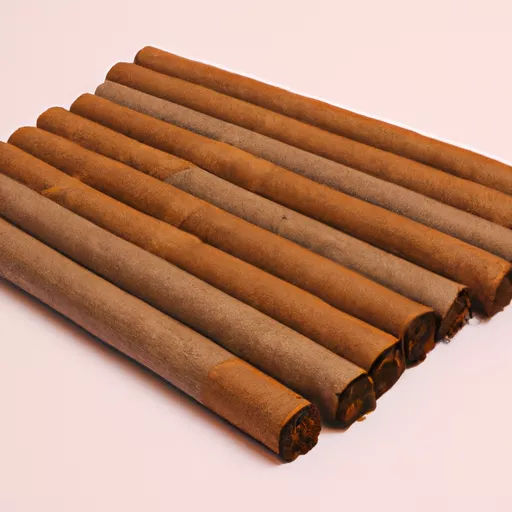
As a lover of cigars, I have always been intrigued by the smaller alternative known as little cigars. These miniature cigars, often referred to as cigarillos, have gained popularity over the years for their convenient size and unique flavors. In this article, I will delve into the world of little cigars, discussing their history, production, and why they have become a favorite among cigar enthusiasts.
History of Little Cigars
Little cigars have a long and interesting history, dating back to the 19th century in Europe. During this time, cigarettes were becoming more popular, but due to their association with working-class men, they were not accepted by the upper class. To cater to the refined tastes of these individuals, little cigars were created. These cigars were smaller in size and more delicately flavored, making them a status symbol for the elite.
However, it wasn’t until the late 20th century that little cigars gained mainstream popularity in the United States. This was due to a loophole in the federal tax law which classified little cigars as cigarettes, meaning they were taxed at a lower rate. As a result, little cigars became a cheaper alternative to cigarettes, and their sales skyrocketed. Today, little cigars can be found in most convenience stores and are enjoyed by people from all walks of life.
Production of Little Cigars
The production of little cigars follows a similar process to that of regular cigars. The main difference lies in the size and type of tobacco used. Little cigars are typically made from a mix of chopped tobacco and a homogenized tobacco leaf wrapper. This blend of tobacco is then tightly rolled into a smaller cigar shape and sealed with homogenized tobacco binder.
The tobacco used in little cigars is different from the tobacco used in regular cigars. Little cigars are made from a mix of short and long filler tobacco, while regular cigars only use long filler tobacco leaves. The shorter filler tobacco used in little cigars is made from scraps and clippings of tobacco leaves, giving them a more consistent burn and flavor profile.
Flavors of Little Cigars
One of the most appealing aspects of little cigars is the variety of flavors they come in. Unlike regular cigars, which are primarily made with natural tobacco, little cigars often have added flavors to enhance the smoking experience. Some popular flavors include cherry, vanilla, chocolate, and even fruity flavors like mango and blueberry.
These flavors are infused into the tobacco during the production process, giving little cigars a unique and enjoyable taste. However, it’s worth noting that the added flavors may not appeal to all cigar enthusiasts, especially those who prefer the natural taste of tobacco.
Why Little Cigars are Popular
Little cigars have gained popularity over the years for various reasons. One of the main factors is their convenient size. Unlike regular cigars, little cigars are small and easy to carry, making them perfect for on-the-go smoking. They also require less time to smoke, making them a great option for those who don’t have a lot of time to spare.
Additionally, the variety of flavors available in little cigars also adds to their popularity. These flavors can entice non-smokers and those who are new to the world of cigars, making it easier for them to try and enjoy smoking. However, it’s essential to note that little cigars still contain nicotine and should be enjoyed responsibly.
Conclusion
In conclusion, little cigars have come a long way since their creation in the 19th century. They have evolved from being a symbol of status to a popular choice among cigar enthusiasts. With their unique flavors, convenient size, and affordable price, it’s no wonder that little cigars have become a favorite among smokers. So whether you’re a seasoned cigar connoisseur or just looking to try something new, why not give little cigars a chance? You might just be pleasantly surprised.
